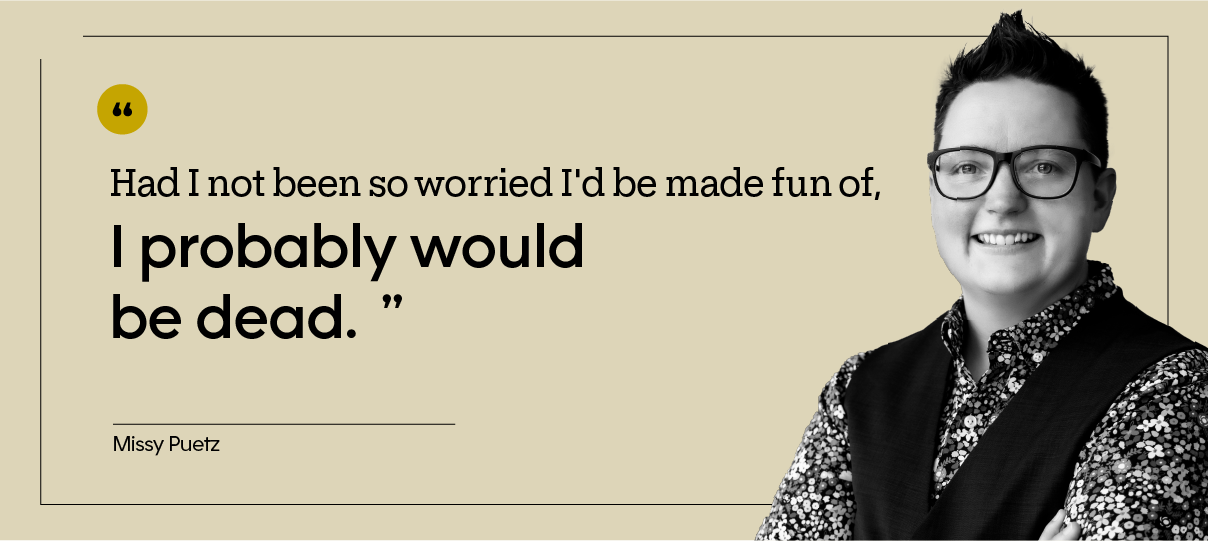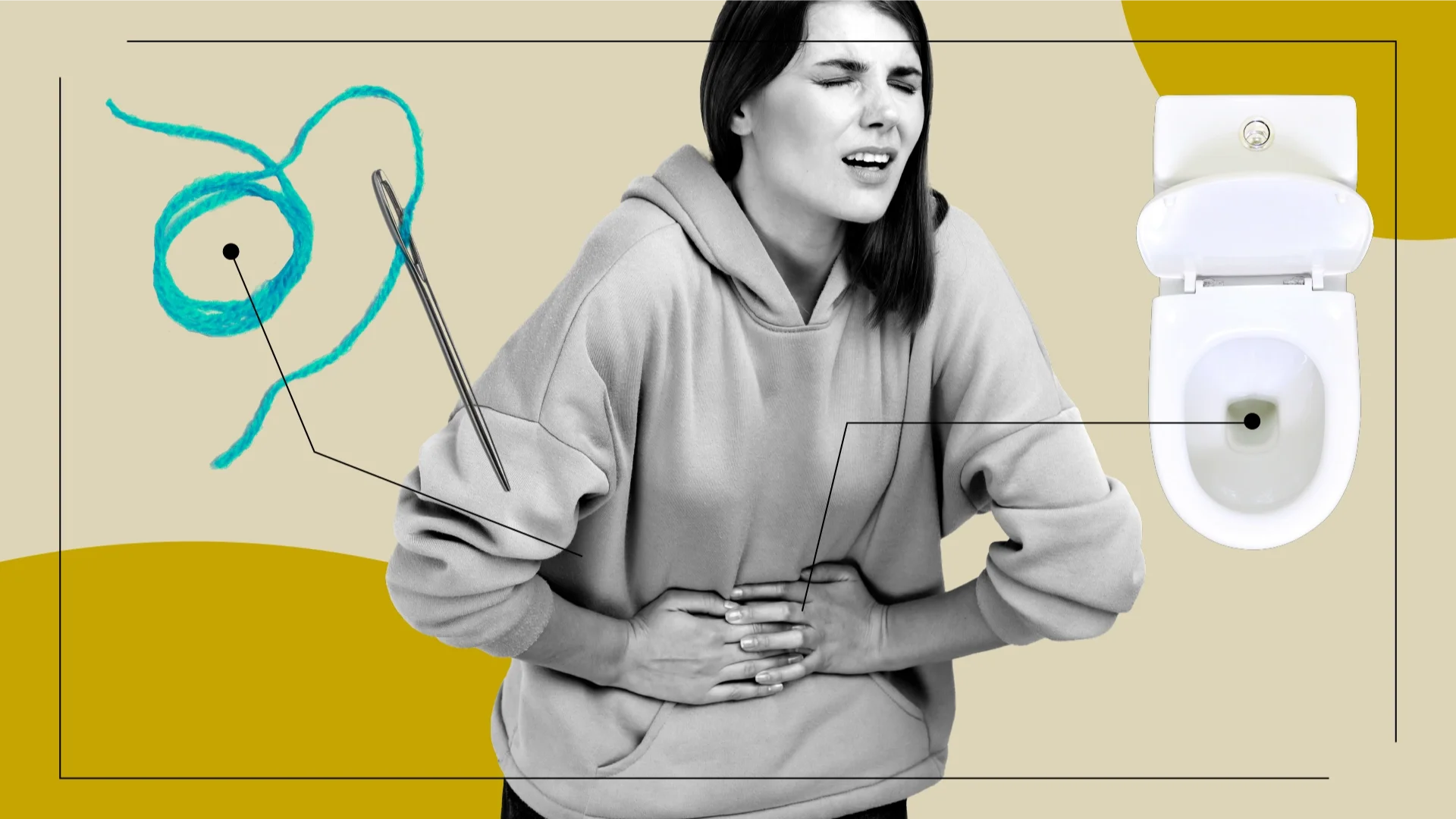Key takeaways:
Appendicitis causes severe abdominal pain that requires immediate medical attention.
Common symptoms include fever, loss of appetite, and pain on the right side of the abdomen.
People who have had appendicitis describe experiencing bloating, constipation, and abdominal pain.
Anastasia Fox was at work when she began feeling bloated and constipated. Anastasia, who lives in Michigan, was 25 years old at the time. She remembers that she didn’t know what was wrong, so she kept working for the rest of the day.
“Then, I actually stopped and got fitted for my wedding dress still on the way home,” she says.
Little did she know that she had appendicitis — an inflammation of the appendix, which can become irritated or infected when it’s clogged.
Quiz: Do I have appendicitis?
![“I’ve now birthed six humans, and [appendicitis] was way worse.” — Anastasia Fox](http://images.ctfassets.net/4f3rgqwzdznj/1lku5SI9yYDiyYMZ4eJr59/bc540fbc4ac1e05c554e8aa00432de0a/patient_stories_feel_appendicitis_quote_1.png)
Four hours later, Anastasia was back home. She spent the evening lying on the couch and watching a movie, and then she headed to bed. As the night progressed, she started feeling worse. She felt pain in her abdomen and had nausea and frequent bowel movements. She crawled back and forth to the bathroom all night. She tried taking a bath. Nothing helped.
The next morning, she was in even more pain. She realized that the pain was now concentrated on her right side, which made her suspect it might be appendicitis. But she worried about how much a trip to the emergency room would cost.
She went to her regular doctor first, since she was worried about what her insurance would cover, but the doctor sent her to the hospital. There, her care team offered her morphine to ease her pain, but she said no.
“My medical insurance wasn’t great at that point in my life,” Anastasia says. “And I just didn't want to be stuck with a lot bigger bill.”
Two hours later, the ER staff diagnosed her with appendicitis. “I said, ‘All right, now I’ll take that morphine,’” she recalls. The morphine allowed her to sleep until she had surgery to remove her appendix the next morning.
The evening after the surgery, she was discharged from the hospital. The drive home with her fiancé was a challenge — every small bump caused her excruciating pain.
Read more like this
Explore these related articles, suggested for readers like you.
“I had a bad reaction to the anesthesia, like when you go to throw up and your stomach clenches,” she recalls. “I’ve now birthed six humans, and [appendicitis] was way worse.”
A deep muscle pain
Heidi Good was 26 and living in New York City when she got appendicitis.
She was exploring neighborhoods in Queens one day when she started having a stomach ache. She worried she had food poisoning from the Indian buffet where she’d had lunch with a friend.
“The pain wasn’t a normal stomach pain,” she says. “I felt like I had done 50 or 100 sit-ups all of a sudden — a deep muscle pain.”

She decided to head home. As she rode the subway, however, the pain increased. She had to transfer trains. By then, neither sitting nor standing made her feel better. It took her an hour to get home, by which point the pain had moved to her right side. It felt as though she had a stitch in her side.
After looking up her symptoms online, Heidi figured she had appendicitis. She found a bulleted list of symptoms, and she had all of them. She and her sister immediately headed to the emergency room.
Heidi’s self-diagnosis was correct. She had open laparotomy surgery. It took a week for her to feel better. After 2 weeks, she had made a full recovery.
Heidi, who’s now 40, remembers both the pain of appendicitis and the sting of the hospital bill. She didn’t have insurance at the time of her surgery. Her first bill was for about $30,000. A hospital social worker helped her negotiate it down to $3,000, but the process took a year. In the end, she says she’s grateful for the help that saved her life.
Faking pain saved her
When Missy Puetz was 13, she was mowing her sister’s lawn when she suddenly had a sharp pain on her right side. Missy remembers feeling worried that her sister would make fun of her for making a fuss, so she kept on mowing the lawn, even though she was in a massive amount of pain.
It started raining, which finally gave Missy an excuse to stop mowing. She remembers her sister teasing her for “getting tired” after mowing the lawn, just as Missy had expected.
Missy tried all kinds of remedies to alleviate the pain, but nothing helped. It sort of felt like an intense gas bubble.
Because Missy was on the verge of getting her first menstrual cycle, her family wondered if her pain was actually caused by cramps. As they went back and forth about what to do, Missy started crying because of the amount of pain she was in. Finally, they took her to an urgent care facility. However, while she was waiting to be seen, the pain suddenly stopped. She was feeling anxious because her mother had to leave work to take her to urgent care. “I was so worried I was gonna be made fun of,” she recalls. “So I just pretended to still be in pain throughout the whole process. Because I was so embarrassed.”

When the doctor examined her, he pressed on her stomach, asking if it hurt and she pretended that it did. He told Missy’s family that, though he wasn’t completely sure, he thought she had appendicitis. Missy remembers feeling horrified that she was pretending to be in pain, which just made her double down on the act.
This fear ended up being a blessing in disguise. It turned out that her appendix had ruptured, which is why the pain had subsided. (A ruptured appendix is serious and can lead to infection, so it was a good thing that she was getting help).
Missy ended up staying in the hospital for 5 days. “Had I not been so worried I'd be made fun of, I probably would be dead,” she says.
What does the doctor say?

Patricia Pinto-Garcia, MD, MPH
Medical Editor
The appendix is a small outpouching near the start of the large intestine. For a long time, scientists weren’t sure why humans had an appendix. Unlike the rest of the gut, it didn’t play a role in digesting food. More recent research suggests that the appendix stores immune cells that help people fight off illness.
Like any other part of the body, the appendix can get inflamed or infected. When that happens, people develop appendicitis. It’s not always clear what causes appendicitis. But research shows that people between the ages of 10 and 30 are most likely to develop it.
Physicians have been treating appendicitis for thousands of years, but it’s enigmatic. Not everyone with appendicitis has the same symptoms, especially at first. As the stories above show, early symptoms of appendicitis can be vague. But symptoms get worse over 24 to 72 hours. That’s when people develop more “classic” symptoms of appendicitis, like fever, inability to eat, and right-side abdominal pain. Anyone who develops these symptoms should seek immediate medical care. And if you have these symptoms and they suddenly get better, you should still get checked out. As Missy’s story shows, you may feel better at first if your appendix bursts. But you’ll start feeling sick again very quickly.
If you end up in an emergency room for suspected appendicitis, don’t be alarmed if your healthcare team isn’t sure whether appendicitis is the correct diagnosis. Early on, it can be tough to tell. Many healthcare centers offer people a “wait and see” approach and antibiotic treatment for early appendicitis. This can help some people avoid immediate surgery.

Why trust our experts?















